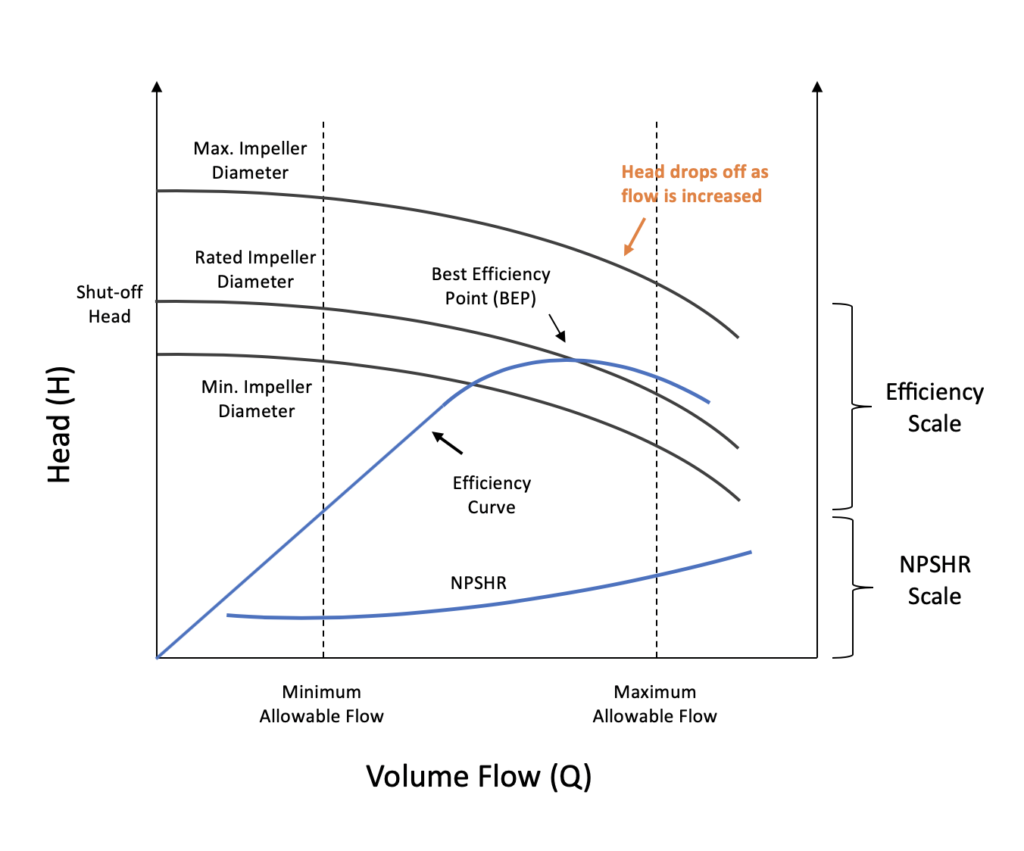How to Read Pump Curve for Centrifugal Pumps
Introduction
In fluid handling systems, accurate pump selection is critical for ensuring performance, efficiency, and reliability. One of the most essential tools in a pump engineer’s toolkit is the pump curve—a graphical representation that outlines how a centrifugal pump will perform under varying system conditions. Whether you’re designing a new installation or troubleshooting an existing system, knowing how to read pump curves empowers you to make informed decisions regarding flow rates, head pressure, efficiency, and energy consumption.
This guide dives into the detailed anatomy of a centrifugal pump characteristic curve, helping engineers, maintenance professionals, and operators understand what the curve reveals—and how to use it to optimize system performance.
What is a Pump Curve?
A pump curve (also known as a pump performance curve) is a graphical chart that displays how a centrifugal pump performs at different flow rates and heads. It is typically provided by the pump manufacturer and is essential for evaluating a pump’s capabilities during selection, installation, or troubleshooting.
There are several types of pump curves you may encounter:
- Head vs Flow (H-Q) Curve
- Efficiency Curve
- Brake Horsepower (BHP) Curve
- NPSHr Curve
- Impeller Diameter Curves
Each curve provides unique insight into how the pump will behave under varying conditions.
Key Components of a Pump Curve Chart
1. Head vs. Flow Rate (H-Q Curve)
This is the main curve, typically shown on a graph with:
- X-axis: Flow rate (Q), in GPM or m³/h
- Y-axis: Head (H), in feet or meters
This curve shows how much head the pump can generate at different flow rates.
2. Efficiency Curves
Efficiency lines overlay the main curve, showing zones where the pump operates most efficiently. The highest point of efficiency is known as the Best Efficiency Point (BEP).
3. Brake Horsepower (BHP) Curve
This shows how much power is required at each point on the flow curve. Proper interpretation ensures that the motor is not under- or oversized.
4. NPSHr Curve
The Net Positive Suction Head required (NPSHr) curve indicates the minimum inlet pressure required to avoid cavitation. The system must provide more than this—known as NPSHa (available)—to ensure safe pump operation.
5. Impeller Diameter Curves
If the pump supports various impeller trims, multiple curves will show performance differences for each impeller size.
How to Read Pump Curves (Step-by-Step)
Step 1: Know Your System Requirements
Identify the flow rate and total dynamic head (TDH) your application demands. This sets your desired operating point.
Step 2: Locate the Operating Point
Find the intersection of your flow rate and head on the curve. This is where the pump will operate.
Step 3: Check Efficiency
Locate the nearest efficiency contour to your operating point. Aim to stay near the BEP for optimal performance.
Step 4: Determine BHP
Use the brake horsepower curve to verify the energy required. This ensures your motor is correctly sized.
Step 5: Verify NPSH
Check that your system can provide more NPSHa than the pump’s NPSHr to prevent cavitation.
Step 6: Adjust Impeller Size if Needed
Use smaller or larger impeller diameters (if supported) to better match the curve with your system’s requirements.
Advanced Engineering Considerations
- System Curve Matching: Superimpose your system curve over the pump curve to find the real-world intersection (true operating point).
- Variable Speed Drives: Adjusting the pump speed shifts the curve, offering greater control.
- Parallel/Series Pumping: Using multiple pumps affects overall system head and flow rate—understand how curves combine.
Why Pump Curve Interpretation Matters
Reading a performance curve of a centrifugal pump isn’t just for engineers—it’s crucial for:
- Reducing energy costs
- Preventing pump failure
- Optimizing process flow
- Extending pump lifespan
- Ensuring accurate motor sizing
A mismatch between system demands and pump capability can result in cavitation, inefficiency, or even catastrophic failure.
Conclusion
A comprehensive understanding of pump curve charts is fundamental to maximizing the reliability, efficiency, and lifespan of centrifugal pumps. By interpreting key elements such as the head-flow relationship, efficiency bands, brake horsepower, and NPSHr, engineers can accurately select and operate pumps tailored to their system’s exact requirements.
Reading a pump performance curve is not merely about selecting a pump that can “do the job,” but about fine-tuning performance to reduce operational costs, avoid cavitation, and maintain system stability. With growing emphasis on energy efficiency and system optimization across industries, mastering centrifugal pump performance curves is more valuable than ever.
💡 Need help choosing the right pump or mechanical seal for your system? Visit MK Flow for professional guidance, product support, and efficient fluid handling solutions tailored to your needs.
Frequently Asked Questions (FAQ)
1. What is a pump curve in simple terms?
A pump curve shows how a pump performs under different flow rates and pressures. It tells you how much water the pump can move and how much resistance it can handle.
2. Why is the Best Efficiency Point (BEP) important?
The BEP is where the pump performs with minimal vibration, wear, and energy usage. Operating near BEP increases the pump’s lifespan and reliability.
3. What happens if I operate too far from the BEP?
You risk excessive energy consumption, cavitation, vibration, and early mechanical seal or bearing failure.
4. Where can I find help with selecting the right pump curve?
You can get expert help and pump selection guidance from the team at MK Flow, where we provide custom solutions, mechanical seals, and pump engineering support for industrial systems.

